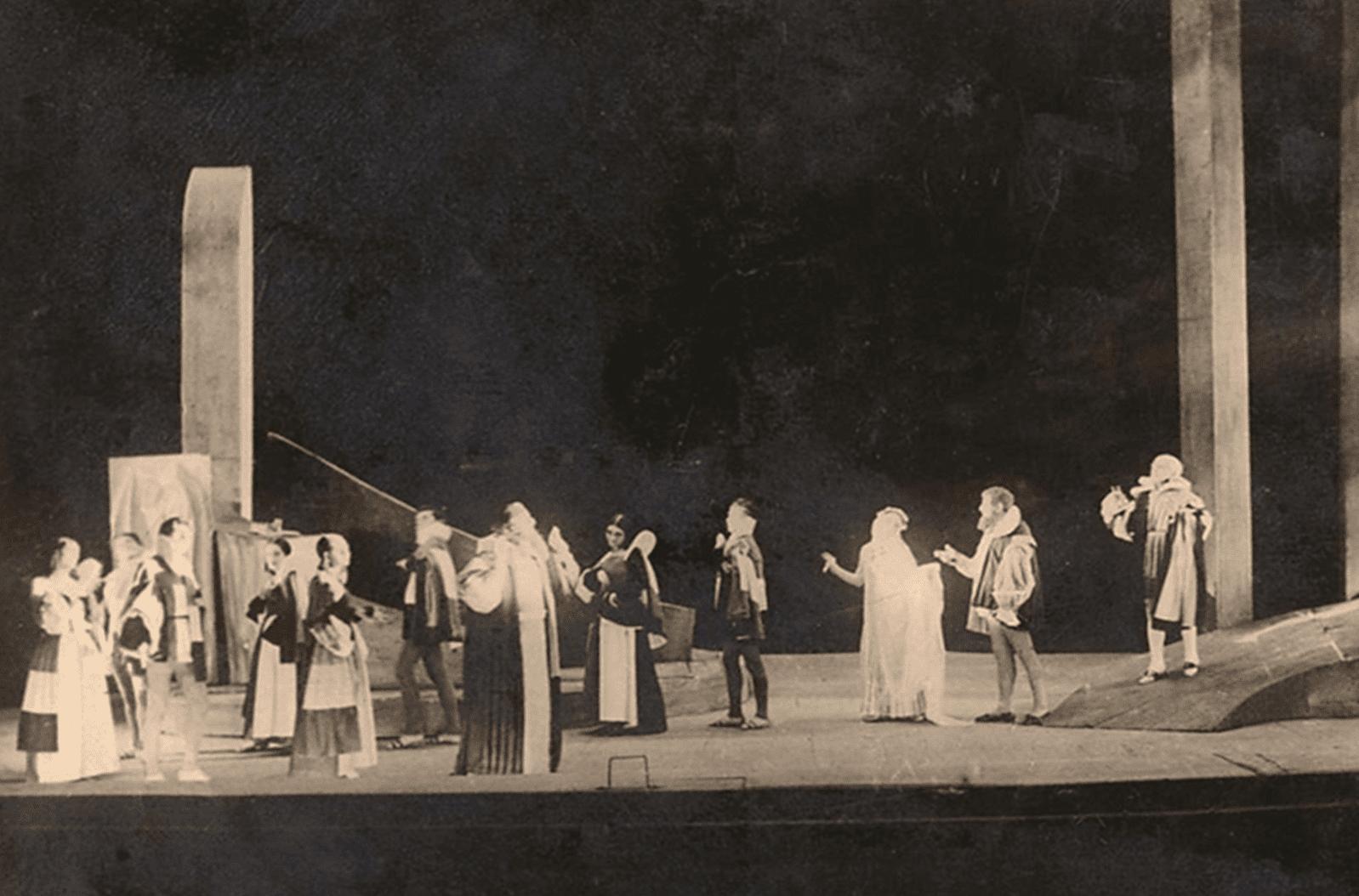
Losing Our Past
What happens when we destroy the past? We lose our memory and when we lose it, we lose ourselves, because there is no “us” without memories. With cities, it is the same. Historical urban areas are the memory of a city, while the buildings serve as records.
The Many-Faceted Problem
Tbilisi’s ongoing transformation is sharply opposing the existing styles of architecture. The old city is still in rubble. While traces of an era as a former Soviet Union republic can be seen in an 18-story Bank of Georgia headquarters, a super modern Peace Bridge pops up along those old facades.
But this transformation isn’t as peaceful as you might think. There is a war between the old and the new.
There are all these high-rises from developers and investors making money out of every little spot available – or not available at first, but eventually, they make it available. Meanwhile, the city’s picturesque old town shows visible signs of decay.
If you’ve been to Tbilisi and took a stroll around the neighborhoods, you should have noticed that each of them has it’s unique style and pattern, while all of them carry characteristics of soviet architecture.
I was born and raised in the district of Mtatsminda. It is an old district, certainly not the oldest, but one of them. It has narrow, tangled streets, unattended damaged houses with huge cracks, tons of blind alleys, communal courtyards and so on and so forth. What it doesn’t have – multiple stories high apartment buildings. Nevertheless, it has a unique style.
[/et_pb_text][et_pb_image src=”https://iamtbilisi.com/wp-content/uploads/2020/02/M2.jpg” show_bottom_space=”off” force_fullwidth=”on” _builder_version=”4.3.2″ locked=”off”][/et_pb_image][et_pb_text _builder_version=”4.4.1″ text_font=”||||||||” text_text_color=”rgba(0,0,0,0.55)” text_font_size=”12px” text_line_height=”1.1em” header_font=”|700|||||||” header_2_font=”|700|||||||” header_3_font=”|700|||||||” header_4_font=”|700|||||||” header_5_font=”|700|||||||” header_6_font=”|700|||||||” background_color=”#f1f1f1″ custom_margin=”||||false|false” custom_padding=”8px|13px|8px|13px|true|true” hover_enabled=”0″ locked=”off”][/et_pb_text][et_pb_text _builder_version=”4.3.2″ header_font=”|700|||||||” header_2_font=”|700|||||||” header_3_font=”|700|||||||” header_4_font=”|700|||||||” header_5_font=”|700|||||||” header_6_font=”|700|||||||” custom_margin=”40px||50px||false|false” custom_padding=”||||false|false” border_style_all=”dotted” border_color_bottom=”#f1f1f1″ locked=”off”]Next to it is a district called Sololaki. It is an even older area and the first one to be developed according to a pre-existing plan. Here the houses look like they are going to collapse at any second. Basically, Mtatsminda is just a bit newer version of Sololaki.
These beautiful old houses are what make these districts so captivating. If they are left without attention, they will gradually collapse, like many already have. Just a few houses away from mine there’s the building pictured below.
[/et_pb_text][et_pb_image src=”https://iamtbilisi.com/wp-content/uploads/2020/02/M3.jpg” show_bottom_space=”off” force_fullwidth=”on” _builder_version=”4.3.2″ locked=”off”][/et_pb_image][et_pb_text _builder_version=”4.4.1″ text_font=”||||||||” text_text_color=”rgba(0,0,0,0.55)” text_font_size=”12px” text_line_height=”1.1em” header_font=”|700|||||||” header_2_font=”|700|||||||” header_3_font=”|700|||||||” header_4_font=”|700|||||||” header_5_font=”|700|||||||” header_6_font=”|700|||||||” background_color=”#f1f1f1″ custom_margin=”||||false|false” custom_padding=”8px|13px|8px|13px|true|true” hover_enabled=”0″ locked=”off”][/et_pb_text][et_pb_text _builder_version=”4.3.2″ header_font=”|700|||||||” header_2_font=”|700|||||||” header_3_font=”|700|||||||” header_4_font=”|700|||||||” header_5_font=”|700|||||||” header_6_font=”|700|||||||” custom_margin=”40px||50px||false|false” custom_padding=”||||false|false” border_style_all=”dotted” border_color_bottom=”#f1f1f1″ locked=”off”]It was so neglected that it started to fall apart and it’s not the only one. Dozens of phenomenal buildings lay dormant, boarded up and unused. These buildings are not qualified for special protection by the historic protection unit, and, thus, they sit largely ignored.
What I’m trying to say is that these historic neighborhoods have their own style. And it is not just about these two, other districts are being neglected as well. It’s just I was born in this one and it is closer to my heart than any other, so I chose this example.
I feel that it is most important to preserve historic landmarks and that there are many ways that the desire for modernization and for preserving historic landmarks can coexist.
But, one thing is to ignore or destroy an important building and another thing is to replace it with some ugly piece of modern architecture that in no way fits in the landscape of a historic neighborhood.
So, what should we do with these buildings? Let them fall apart? Replace them all with Biltmores (which by the way is just disgusting)? Or save the memory of the city? Of course, the latter, but we shouldn’t do it at the expense of our safety.
Renovate or Destroy
[/et_pb_text][et_pb_image src=”https://iamtbilisi.com/wp-content/uploads/2020/02/M4.jpg” show_bottom_space=”off” force_fullwidth=”on” _builder_version=”4.3.2″ locked=”off”][/et_pb_image][et_pb_text _builder_version=”4.4.1″ text_font=”||||||||” text_text_color=”rgba(0,0,0,0.55)” text_font_size=”12px” text_line_height=”1.1em” header_font=”|700|||||||” header_2_font=”|700|||||||” header_3_font=”|700|||||||” header_4_font=”|700|||||||” header_5_font=”|700|||||||” header_6_font=”|700|||||||” background_color=”#f1f1f1″ custom_margin=”||||false|false” custom_padding=”8px|13px|8px|13px|true|true” hover_enabled=”0″ locked=”off”][/et_pb_text][et_pb_text _builder_version=”4.3.2″ header_font=”|700|||||||” header_2_font=”|700|||||||” header_3_font=”|700|||||||” header_4_font=”|700|||||||” header_5_font=”|700|||||||” header_6_font=”|700|||||||” custom_margin=”40px||50px||false|false” custom_padding=”||||false|false” border_style_all=”dotted” border_color_bottom=”#f1f1f1″ locked=”off”]The issue of whether to preserve, or destroy historic buildings is complex. Many feel that it is more important for a society to stay current, even if that comes at the expense of destroying historic landmarks. Others feel that history is not something you can rebuild once a building is destroyed, and that we must preserve physical history at all costs. I say – it depends on a state of the building.
Historic buildings cannot be replaced. We can build replicas, but we cannot replace a historic building once it has been torn down. When such buildings give us a connection to our past and where we came from, it is tragic to destroy such relics. But if it’s falling apart and is no longer safe to live in, then instead of destroying or desperately trying to preserve it, maybe we should try restoring them.
Let’s be honest, some old buildings are just one kick away from collapsing. That’s awful and what is more important, it’s not safe. Such buildings have to be properly demolished and only then restored. Basically I’m saying, that, if a historical building is beyond repair it should be taken down and a new exactly same one should be constructed. This is how Dresden was restored to its original look after the WW2.
Memories can exist without buildings but fade away even further when there is no physical reminder. And when there is no physical reminder, we have nothing for future generations to see.
The beauty of the history
[/et_pb_text][et_pb_image src=”https://iamtbilisi.com/wp-content/uploads/2020/02/M5.jpg” show_bottom_space=”off” force_fullwidth=”on” _builder_version=”4.3.2″ locked=”off”][/et_pb_image][et_pb_text _builder_version=”4.4.1″ text_font=”||||||||” text_text_color=”rgba(0,0,0,0.55)” text_font_size=”12px” text_line_height=”1.1em” header_font=”|700|||||||” header_2_font=”|700|||||||” header_3_font=”|700|||||||” header_4_font=”|700|||||||” header_5_font=”|700|||||||” header_6_font=”|700|||||||” background_color=”#f1f1f1″ custom_margin=”||||false|false” custom_padding=”8px|13px|8px|13px|true|true” hover_enabled=”0″ locked=”off”][/et_pb_text][et_pb_text _builder_version=”4.3.2″ header_font=”|700|||||||” header_2_font=”|700|||||||” header_3_font=”|700|||||||” header_4_font=”|700|||||||” header_5_font=”|700|||||||” header_6_font=”|700|||||||” custom_margin=”40px||50px||false|false” custom_padding=”||||false|false” border_style_all=”dotted” border_color_bottom=”#f1f1f1″ locked=”off”]It’s amazing that so many of Tbilisi’s cupcake-colored houses and opulent Art Nouveau mansions survived the Soviet era. But that’s not to say 70 years of imposed austerity didn’t leave its mark on the cityscape. During Soviet times, people from rural areas were encouraged, or to be more accurate, forced to move to Tbilisi so they could contribute their labor and be more easily controlled. Large houses built at the turn of the century were subdivided into smaller apartments to accommodate the influx of families.
Almost overnight, mansions went from supporting one household to sheltering multiple families. And of course, everyone wanted their own entrance (and maybe some extra space too, because, you know, why not? It’s not your house anyway, so you might as well grab as much as you can) so walls were knocked down, extensions tacked on (have you seen those extensions on those tall Soviet crappy buildings? It’s like building a whole new room on the side of your 10th-floor apartment), doorways added and new staircases constructed. These staircases link to a central courtyard (which were and still remain communal), dominated by vine trellises, rose bushes and a well. Before piping, this would have been the building’s only source of fresh water.
[/et_pb_text][et_pb_image src=”https://iamtbilisi.com/wp-content/uploads/2020/02/M6.jpg” show_bottom_space=”off” force_fullwidth=”on” _builder_version=”4.3.2″ locked=”off”][/et_pb_image][et_pb_text _builder_version=”4.4.1″ text_font=”||||||||” text_text_color=”rgba(0,0,0,0.55)” text_font_size=”12px” text_line_height=”1.1em” header_font=”|700|||||||” header_2_font=”|700|||||||” header_3_font=”|700|||||||” header_4_font=”|700|||||||” header_5_font=”|700|||||||” header_6_font=”|700|||||||” background_color=”#f1f1f1″ custom_margin=”||||false|false” custom_padding=”8px|13px|8px|13px|true|true” hover_enabled=”0″ locked=”off”][/et_pb_text][et_pb_text _builder_version=”4.3.2″ header_font=”|700|||||||” header_2_font=”|700|||||||” header_3_font=”|700|||||||” header_4_font=”|700|||||||” header_5_font=”|700|||||||” header_6_font=”|700|||||||” custom_margin=”40px||50px||false|false” custom_padding=”||||false|false” border_style_all=”dotted” border_color_bottom=”#f1f1f1″ locked=”off”]
While I’m on the subject of “communal” stuff, I might as well mention that one of the leading reasons why buildings are not being renovated is because of the people living in them. Why? You might ask. I’ll tell you and I’m saying this from personal experience too – because multiple families own one building and some of them like the way it is, some of them just don’t care, some of them want money for it, some of them want even more money, some of them want new houses. Also, many of them are elderly and just can not let go of their slice of property. So, it’s not ALL mayor’s or government’s fault. People – people are the real problem here.
[/et_pb_text][et_pb_image src=”https://iamtbilisi.com/wp-content/uploads/2020/02/M7.jpg” show_bottom_space=”off” force_fullwidth=”on” _builder_version=”4.3.2″ locked=”off”][/et_pb_image][et_pb_text _builder_version=”4.4.1″ text_font=”||||||||” text_text_color=”rgba(0,0,0,0.55)” text_font_size=”12px” text_line_height=”1.1em” header_font=”|700|||||||” header_2_font=”|700|||||||” header_3_font=”|700|||||||” header_4_font=”|700|||||||” header_5_font=”|700|||||||” header_6_font=”|700|||||||” background_color=”#f1f1f1″ custom_margin=”||||false|false” custom_padding=”8px|13px|8px|13px|true|true” hover_enabled=”0″ locked=”off”][/et_pb_text][et_pb_text _builder_version=”4.3.2″ header_font=”|700|||||||” header_2_font=”|700|||||||” header_3_font=”|700|||||||” header_4_font=”|700|||||||” header_5_font=”|700|||||||” header_6_font=”|700|||||||” custom_margin=”40px||50px||false|false” custom_padding=”||||false|false” border_style_all=”dotted” border_color_bottom=”#f1f1f1″ locked=”off”]Okay, back to the old and its beauty. Because of all that kerfuffle in Soviet times, residential streets of Tbilisi are a bit illusory from outside. The real city is behind that neat and ordered exterior of the main street – laundry lines, detached garages, staircases, wine cellars, underpasses, and doorways – a hint at the communal, often messy nature of life in inner-city Tbilisi, where many families live under the same roof.
[/et_pb_text][et_pb_image src=”https://iamtbilisi.com/wp-content/uploads/2020/02/M8.jpg” show_bottom_space=”off” force_fullwidth=”on” _builder_version=”4.3.2″ locked=”off”][/et_pb_image][et_pb_text _builder_version=”4.4.1″ text_font=”||||||||” text_text_color=”rgba(0,0,0,0.55)” text_font_size=”12px” text_line_height=”1.1em” header_font=”|700|||||||” header_2_font=”|700|||||||” header_3_font=”|700|||||||” header_4_font=”|700|||||||” header_5_font=”|700|||||||” header_6_font=”|700|||||||” background_color=”#f1f1f1″ custom_margin=”||||false|false” custom_padding=”8px|13px|8px|13px|true|true” hover_enabled=”0″ locked=”off”][/et_pb_text][et_pb_image src=”https://iamtbilisi.com/wp-content/uploads/2020/02/M8.jpeg” show_bottom_space=”off” force_fullwidth=”on” _builder_version=”4.3.2″ locked=”off”][/et_pb_image][et_pb_text _builder_version=”4.4.1″ text_font=”||||||||” text_text_color=”rgba(0,0,0,0.55)” text_font_size=”12px” text_line_height=”1.1em” header_font=”|700|||||||” header_2_font=”|700|||||||” header_3_font=”|700|||||||” header_4_font=”|700|||||||” header_5_font=”|700|||||||” header_6_font=”|700|||||||” background_color=”#f1f1f1″ custom_margin=”||||false|false” custom_padding=”8px|13px|8px|13px|true|true” hover_enabled=”0″ locked=”off”][/et_pb_text][et_pb_text _builder_version=”4.3.2″ header_font=”|700|||||||” header_2_font=”|700|||||||” header_3_font=”|700|||||||” header_4_font=”|700|||||||” header_5_font=”|700|||||||” header_6_font=”|700|||||||” custom_margin=”40px||50px||false|false” custom_padding=”||||false|false” border_style_all=”dotted” border_color_bottom=”#f1f1f1″ locked=”off”]But there is more to the city than its beautiful communal houses (most of which, by the way, are in need of serious repairs) and now I’ll present you some of my favorites (some of them are from the 19th century, some from the 20th).
House of Vasil Gabashvili
[/et_pb_text][et_pb_image src=”https://iamtbilisi.com/wp-content/uploads/2020/02/M11.jpg” show_bottom_space=”off” force_fullwidth=”on” _builder_version=”4.3.2″ locked=”off”][/et_pb_image][et_pb_text _builder_version=”4.4.1″ text_font=”||||||||” text_text_color=”rgba(0,0,0,0.55)” text_font_size=”12px” text_line_height=”1.1em” header_font=”|700|||||||” header_2_font=”|700|||||||” header_3_font=”|700|||||||” header_4_font=”|700|||||||” header_5_font=”|700|||||||” header_6_font=”|700|||||||” background_color=”#f1f1f1″ custom_margin=”||||false|false” custom_padding=”8px|13px|8px|13px|true|true” hover_enabled=”0″ locked=”off”][/et_pb_text][et_pb_text _builder_version=”4.3.2″ header_font=”|700|||||||” header_2_font=”|700|||||||” header_3_font=”|700|||||||” header_4_font=”|700|||||||” header_5_font=”|700|||||||” header_6_font=”|700|||||||” custom_margin=”40px||50px||false|false” custom_padding=”||||false|false” border_style_all=”dotted” border_color_bottom=”#f1f1f1″ locked=”off”]This charming building is right behind the Georgian National Academy of Sciences at Rustaveli Avenue. It was constructed in 1897 and belonged to the famous lawyer and economist Vasil Gabashvili. It’s one of my favorite old buildings in Tbilisi. Its facade is a mix of baroque and rococo styles. And its balcony is so exquisite. It also has a beautiful garden with a round fountain. You can not find a carved façade and balcony like this anywhere else in Tbilisi.
Here is an interesting fact about this building. After the Second World War, the Soviet Government was in the process of destroying this beauty to build new constructivist housing instead. This house was supposed to have met the same end, but the famous therapist Nikoloz Kipshidze, who was Stalin’s private doctor and the husband of Vasil Gabashvili’s daughter, showed a photo of the house to Stalin and asked him to save it from destruction. As a result, the building survived and has been preserved to this day.
“It’s so beautiful that even Stalin didn’t dare to touch it.”
Georgian Hogwarts
[/et_pb_text][et_pb_image src=”https://iamtbilisi.com/wp-content/uploads/2020/02/M12.jpg” show_bottom_space=”off” force_fullwidth=”on” _builder_version=”4.3.2″ locked=”off”][/et_pb_image][et_pb_text _builder_version=”4.4.1″ text_font=”||||||||” text_text_color=”rgba(0,0,0,0.55)” text_font_size=”12px” text_line_height=”1.1em” header_font=”|700|||||||” header_2_font=”|700|||||||” header_3_font=”|700|||||||” header_4_font=”|700|||||||” header_5_font=”|700|||||||” header_6_font=”|700|||||||” background_color=”#f1f1f1″ custom_margin=”||||false|false” custom_padding=”8px|13px|8px|13px|true|true” hover_enabled=”0″ locked=”off”][/et_pb_text][et_pb_text _builder_version=”4.3.2″ header_font=”|700|||||||” header_2_font=”|700|||||||” header_3_font=”|700|||||||” header_4_font=”|700|||||||” header_5_font=”|700|||||||” header_6_font=”|700|||||||” custom_margin=”40px||50px||false|false” custom_padding=”||||false|false” border_style_all=”dotted” border_color_bottom=”#f1f1f1″ locked=”off”]One of the most distinguished and unusual buildings in Tbilisi is the former Women’s Gymnasium Number 3. This 19th-century Neo-Gothic building is really one of the architectural jewels of Tbilisi. The building is often referred to as ‘little Hogwarts’ for its bizarre architecture and design.
Actually, the gymnasium was with the chapel which continued the tradition of the Lutheran Church (which as you might have guessed was scrapped during the Soviet times). The chapel was on the second floor and its door with crosses on it is still maintained.
Over the years, the building had different functions and names as it served as an infirmary during the First and Second World Wars. At one time, it even housed a Law school. At present, the Authorized School No. 6 is located here. The building amazes passers-by with its unique design and mystical atmosphere, especially at night, when the tall, Gothic windows are illuminated with golden lights.
Vintage House at Betlemi Street
[/et_pb_text][et_pb_image src=”https://iamtbilisi.com/wp-content/uploads/2020/02/M13.jpg” show_bottom_space=”off” force_fullwidth=”on” _builder_version=”4.3.2″ locked=”off”][/et_pb_image][et_pb_text _builder_version=”4.4.1″ text_font=”||||||||” text_text_color=”rgba(0,0,0,0.55)” text_font_size=”12px” text_line_height=”1.1em” header_font=”|700|||||||” header_2_font=”|700|||||||” header_3_font=”|700|||||||” header_4_font=”|700|||||||” header_5_font=”|700|||||||” header_6_font=”|700|||||||” background_color=”#f1f1f1″ custom_margin=”||||false|false” custom_padding=”8px|13px|8px|13px|true|true” hover_enabled=”0″ locked=”off”][/et_pb_text][et_pb_text _builder_version=”4.3.2″ header_font=”|700|||||||” header_2_font=”|700|||||||” header_3_font=”|700|||||||” header_4_font=”|700|||||||” header_5_font=”|700|||||||” header_6_font=”|700|||||||” custom_margin=”40px||50px||false|false” custom_padding=”||||false|false” border_style_all=”dotted” border_color_bottom=”#f1f1f1″ locked=”off”]This beautiful 19th-century house on Betlemi Street is the only stained glasshouse in the city. It is not known who built this unique house or who used to live there, but it is a fact that the owner had a sophisticated and modern taste.
The main characteristic of this house is its colorful glass windows. Tbilisi Opera and Ballet Theatre, as well as The Tbilisi State Academy of the Arts, are yet another example where one can see similar “Victorian” use of stained glass, but this one is the only private residence of its kind. So, yeah, it’s pretty amazing if you ask me.
The interior of the house is just hypnotizing. Spiral staircases, hallways, and colorful windows just make you feel its grandeur.
The Former Auditorium of the Industrial Technical College
[/et_pb_text][et_pb_image src=”https://iamtbilisi.com/wp-content/uploads/2020/02/M14.jpg” show_bottom_space=”off” force_fullwidth=”on” _builder_version=”4.3.2″ locked=”off”][/et_pb_image][et_pb_text _builder_version=”4.4.1″ text_font=”||||||||” text_text_color=”rgba(0,0,0,0.55)” text_font_size=”12px” text_line_height=”1.1em” header_font=”|700|||||||” header_2_font=”|700|||||||” header_3_font=”|700|||||||” header_4_font=”|700|||||||” header_5_font=”|700|||||||” header_6_font=”|700|||||||” background_color=”#f1f1f1″ custom_margin=”||||false|false” custom_padding=”8px|13px|8px|13px|true|true” hover_enabled=”0″ locked=”off”][/et_pb_text][et_pb_image src=”https://iamtbilisi.com/wp-content/uploads/2020/02/M15.jpg” show_bottom_space=”off” force_fullwidth=”on” _builder_version=”4.3.2″ locked=”off”][/et_pb_image][et_pb_text _builder_version=”4.4.1″ text_font=”||||||||” text_text_color=”rgba(0,0,0,0.55)” text_font_size=”12px” text_line_height=”1.1em” header_font=”|700|||||||” header_2_font=”|700|||||||” header_3_font=”|700|||||||” header_4_font=”|700|||||||” header_5_font=”|700|||||||” header_6_font=”|700|||||||” background_color=”#f1f1f1″ custom_margin=”||||false|false” custom_padding=”8px|13px|8px|13px|true|true” hover_enabled=”0″ locked=”off”][/et_pb_text][et_pb_text _builder_version=”4.3.2″ header_font=”|700|||||||” header_2_font=”|700|||||||” header_3_font=”|700|||||||” header_4_font=”|700|||||||” header_5_font=”|700|||||||” header_6_font=”|700|||||||” custom_margin=”40px||50px||false|false” custom_padding=”||||false|false” border_style_all=”dotted” border_color_bottom=”#f1f1f1″ locked=”off”]There’s something about Soviet/Modernist auditorium/cinema design that just gets me going: these architects knew how to combine fashion and function in their designs. This is the Industrial Technical College, or, was at least. Today it’s a neglected dumpster and shelter for homeless people.
This particular auditorium, with its extremely ornate exterior decorations, toed the line between modernist and futurist, though to be fair there is a significant overlap in the Venn diagram of those two styles. Unfortunately, half of these exterior decorations are gone now.
The Former Archaeology Museum
[/et_pb_text][et_pb_image src=”https://iamtbilisi.com/wp-content/uploads/2020/02/M16.jpg” show_bottom_space=”off” force_fullwidth=”on” _builder_version=”4.3.2″ locked=”off”][/et_pb_image][et_pb_text _builder_version=”4.4.1″ text_font=”||||||||” text_text_color=”rgba(0,0,0,0.55)” text_font_size=”12px” text_line_height=”1.1em” header_font=”|700|||||||” header_2_font=”|700|||||||” header_3_font=”|700|||||||” header_4_font=”|700|||||||” header_5_font=”|700|||||||” header_6_font=”|700|||||||” background_color=”#f1f1f1″ custom_margin=”||||false|false” custom_padding=”8px|13px|8px|13px|true|true” hover_enabled=”0″ locked=”off”][/et_pb_text][et_pb_image src=”https://iamtbilisi.com/wp-content/uploads/2020/02/M17.jpg” show_bottom_space=”off” force_fullwidth=”on” _builder_version=”4.3.2″ locked=”off”][/et_pb_image][et_pb_text _builder_version=”4.4.1″ text_font=”||||||||” text_text_color=”rgba(0,0,0,0.55)” text_font_size=”12px” text_line_height=”1.1em” header_font=”|700|||||||” header_2_font=”|700|||||||” header_3_font=”|700|||||||” header_4_font=”|700|||||||” header_5_font=”|700|||||||” header_6_font=”|700|||||||” background_color=”#f1f1f1″ custom_margin=”||||false|false” custom_padding=”8px|13px|8px|13px|true|true” hover_enabled=”0″ locked=”off”][/et_pb_text][et_pb_text _builder_version=”4.3.2″ header_font=”|700|||||||” header_2_font=”|700|||||||” header_3_font=”|700|||||||” header_4_font=”|700|||||||” header_5_font=”|700|||||||” header_6_font=”|700|||||||” custom_margin=”40px||50px||false|false” custom_padding=”||||false|false” border_style_all=”dotted” border_color_bottom=”#f1f1f1″ locked=”off”]This one looks like some link of a shrine to me, but it’s just a former Museum of Archeology. The museum building itself is perfectly symmetrical (other than the odd bits crumbling off its edges), and rises out of the ground quite gracefully. There is a great square sculpture at the building’s apex featuring some abstract soviet bas relief of god knows what, and underneath some fantastical Georgian typography that reads “Archaeology.” The real treat of the building was in the rear, where one was able to enter one of the museum’s old exhibition halls.
A Silver Lining
[/et_pb_text][et_pb_image src=”https://iamtbilisi.com/wp-content/uploads/2020/02/M18.jpg” show_bottom_space=”off” force_fullwidth=”on” _builder_version=”4.3.2″ locked=”off”][/et_pb_image][et_pb_text _builder_version=”4.4.1″ text_font=”||||||||” text_text_color=”rgba(0,0,0,0.55)” text_font_size=”12px” text_line_height=”1.1em” header_font=”|700|||||||” header_2_font=”|700|||||||” header_3_font=”|700|||||||” header_4_font=”|700|||||||” header_5_font=”|700|||||||” header_6_font=”|700|||||||” background_color=”#f1f1f1″ custom_margin=”||||false|false” custom_padding=”8px|13px|8px|13px|true|true” hover_enabled=”0″ locked=”off”][/et_pb_text][et_pb_text _builder_version=”4.3.2″ header_font=”|700|||||||” header_2_font=”|700|||||||” header_3_font=”|700|||||||” header_4_font=”|700|||||||” header_5_font=”|700|||||||” header_6_font=”|700|||||||” custom_margin=”40px||50px||false|false” custom_padding=”||||false|false” border_style_all=”dotted” border_color_bottom=”#f1f1f1″ locked=”off”]This building here has a status of Cultural Heritage Monument and is considered to be one of the oldest buildings in Tbilisi. It was constructed in the middle of the 19th century. The special charm of the building is a rounded wooden balcony decorated with carved details that are typical to the old houses built in Tbilisi.
It is also one of the few historical buildings that was actually restored and quite successfully at that. It’s still beautiful and retains its characteristics.
[/et_pb_text][et_pb_image src=”https://iamtbilisi.com/wp-content/uploads/2020/02/M19.jpg” show_bottom_space=”off” force_fullwidth=”on” _builder_version=”4.3.2″ locked=”off”][/et_pb_image][et_pb_text _builder_version=”4.4.1″ text_font=”||||||||” text_text_color=”rgba(0,0,0,0.55)” text_font_size=”12px” text_line_height=”1.1em” header_font=”|700|||||||” header_2_font=”|700|||||||” header_3_font=”|700|||||||” header_4_font=”|700|||||||” header_5_font=”|700|||||||” header_6_font=”|700|||||||” background_color=”#f1f1f1″ custom_margin=”||||false|false” custom_padding=”8px|13px|8px|13px|true|true” hover_enabled=”0″ locked=”off”][/et_pb_text][et_pb_text _builder_version=”4.3.2″ header_font=”|700|||||||” header_2_font=”|700|||||||” header_3_font=”|700|||||||” header_4_font=”|700|||||||” header_5_font=”|700|||||||” header_6_font=”|700|||||||” custom_margin=”40px||50px||false|false” custom_padding=”||||false|false” border_style_all=”dotted” border_color_bottom=”#f1f1f1″ locked=”off”]I’ll give you another example of at least some good things happening.
[/et_pb_text][et_pb_image src=”https://iamtbilisi.com/wp-content/uploads/2020/02/M20.jpg” show_bottom_space=”off” force_fullwidth=”on” _builder_version=”4.3.2″ locked=”off”][/et_pb_image][et_pb_text _builder_version=”4.4.1″ text_font=”||||||||” text_text_color=”rgba(0,0,0,0.55)” text_font_size=”12px” text_line_height=”1.1em” header_font=”|700|||||||” header_2_font=”|700|||||||” header_3_font=”|700|||||||” header_4_font=”|700|||||||” header_5_font=”|700|||||||” header_6_font=”|700|||||||” background_color=”#f1f1f1″ custom_margin=”||||false|false” custom_padding=”8px|13px|8px|13px|true|true” hover_enabled=”0″ locked=”off”][/et_pb_text][et_pb_text _builder_version=”4.3.2″ header_font=”|700|||||||” header_2_font=”|700|||||||” header_3_font=”|700|||||||” header_4_font=”|700|||||||” header_5_font=”|700|||||||” header_6_font=”|700|||||||” custom_margin=”40px||50px||false|false” custom_padding=”||||false|false” border_style_all=”dotted” border_color_bottom=”#f1f1f1″ locked=”off”]
The house was built between 19th-20th centuries by famous philanthropist and public figure Erasti Tchavtchanidze. Its exterior is decorated with beautiful ornaments and balconies.
The interior is adorned with golden patterns. Angels are looking down from the top, while on the walls are well-known scenes from epic Georgian poem The Knight in the Panter’s Skin (that’s what they call it in English, but it’s really the tiger’s skin, no panther there), by renowned medieval poet Shota Rustaveli and illustrations by famous 19th-century Hungarian artist Mihaly Zichy.
[/et_pb_text][et_pb_image src=”https://iamtbilisi.com/wp-content/uploads/2020/02/M21.jpg” show_bottom_space=”off” force_fullwidth=”on” _builder_version=”4.3.2″ locked=”off”][/et_pb_image][et_pb_text _builder_version=”4.4.1″ text_font=”||||||||” text_text_color=”rgba(0,0,0,0.55)” text_font_size=”12px” text_line_height=”1.1em” header_font=”|700|||||||” header_2_font=”|700|||||||” header_3_font=”|700|||||||” header_4_font=”|700|||||||” header_5_font=”|700|||||||” header_6_font=”|700|||||||” background_color=”#f1f1f1″ custom_margin=”||||false|false” custom_padding=”8px|13px|8px|13px|true|true” hover_enabled=”0″ locked=”off”][/et_pb_text][et_pb_text _builder_version=”4.4.1″ header_font=”|700|||||||” header_2_font=”|700|||||||” header_3_font=”|700|||||||” header_4_font=”|700|||||||” header_5_font=”|700|||||||” header_6_font=”|700|||||||” custom_margin=”40px||50px||false|false” custom_padding=”||||false|false” hover_enabled=”0″ border_style_all=”dotted” border_color_bottom=”#f1f1f1″ locked=”off”]The building was in a very poor state and was in an urgent need of renovation. Thankfully, it was revived just a few years ago. The exterior is now beige, the paintings on the walls are restored, and the eagle is back to its rightful place.
But these buildings are just a few lucky ones, while countless others are neglected and left to decay. This is what we should be doing with them as well – preserving our collective memory.
[/et_pb_text][/et_pb_column][/et_pb_row][/et_pb_section]



